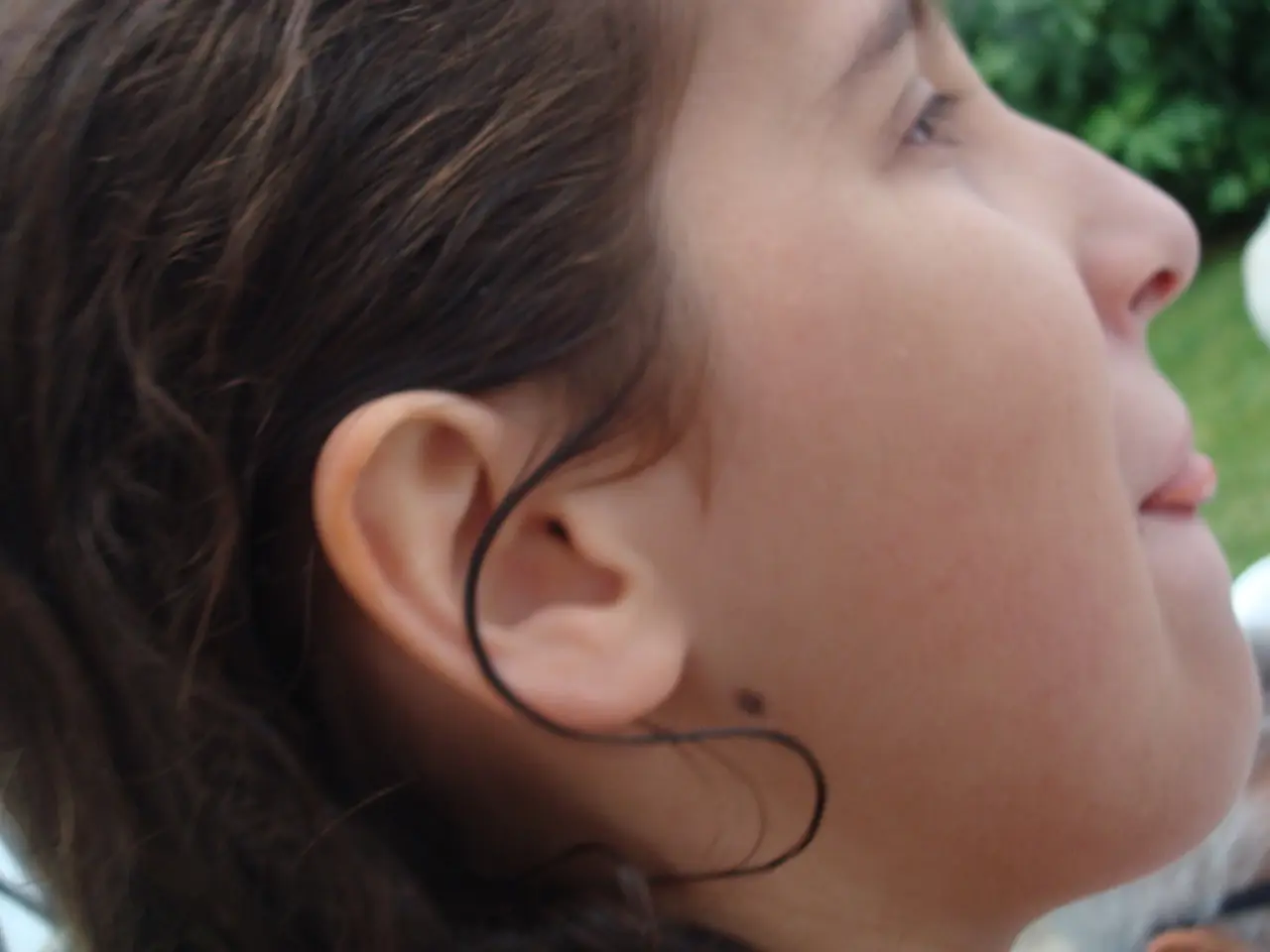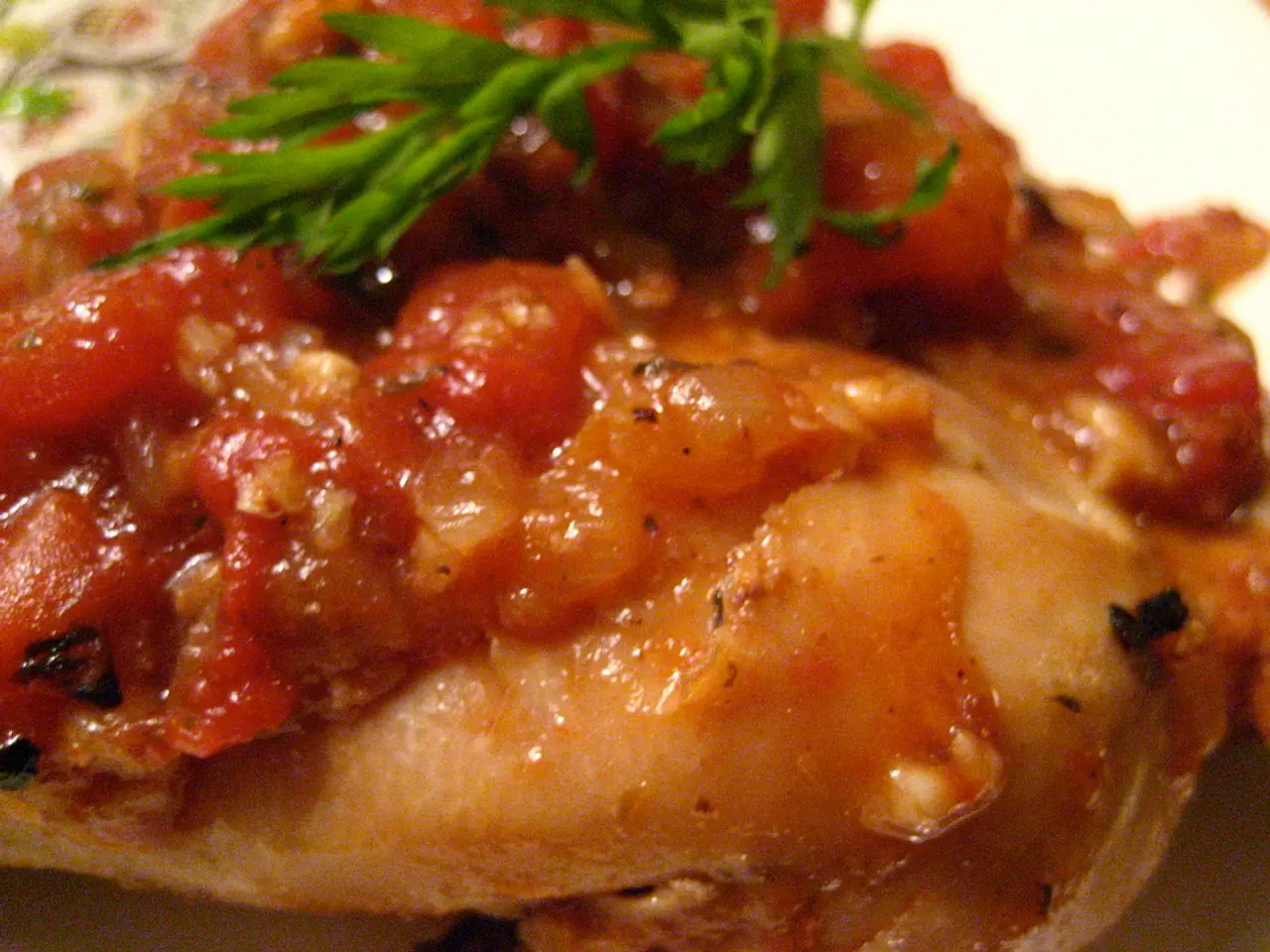Mole-related Blemish: Understanding Causes, Remedies, and Medical Consultation Timing
Pimples on moles can be a cause for concern, but understanding their symptoms, potential causes, and appropriate treatments can help alleviate any worries. Here's a comprehensive guide to help you navigate this common skin issue.
### Symptoms of Pimples on Moles
A pimple on a mole may appear as a red, inflamed bump that can be painful or itchy. It is essential to pay attention if this pimple-like bump persists or worsens over time. Other signs to watch for on the mole itself include changes in size, color, bleeding or developing an open sore that doesn’t heal, rapid growth, or unusual texture. These changes could potentially indicate irritation, infection, or more serious concerns such as skin cancer[1].
### Possible Causes
Pimples on moles can occur due to infection or inflammation around the mole, bacterial folliculitis being a common culprit. In such cases, treating the underlying infection may involve topical or oral antibiotics[1]. It is also possible for acne or folliculitis to occur on or near moles, but typically, there will be other acne symptoms nearby (whiteheads, blackheads).
Pimples on moles may also stem from the mole itself developing irritation or secondary changes.
### Treatments
At-home care such as gentle skin care and avoiding irritation can help prevent lumps and bumps[4]. If the bump is an infected pimple or folliculitis, topical or oral antibiotics might be prescribed[1][5]. For moles that cause persistent problems or for cosmetic reasons, dermatologists may recommend removal methods such as laser therapy, especially for flat or benign moles[3].
If the lesion is suspected to be skin cancer or a precancerous growth, biopsy and appropriate oncologic treatment may be required[1].
### When to Seek Medical Attention
It is crucial to consult a healthcare professional, preferably a dermatologist, if:
- The pimple on the mole does not disappear after a few weeks. - The mole or bump bleeds, does not heal, or ulcerates. - The mole or bump is rapidly growing or changing color. - There is persistent pain, itching, or any unusual symptoms around the mole. - You cannot distinguish whether the bump is acne or something else, or if you have any concerns about skin cancer risk[1].
Early evaluation and diagnosis are important to rule out malignancy, treat infections efficiently, and decide on appropriate care. A dermatologist can perform a biopsy if necessary and recommend treatments such as topical agents, oral medications, or surgical/laser removal[1][2][3][5].
### Additional Information
- Moles can be flat or raised and sometimes have hairs growing out of them. - Hormonal changes in adolescents, young adults, females during menstruation, and menopause can trigger pimple breakouts. - Causes of pimples involve the skin's natural oil, or sebum, and dead skin cells collecting in hair follicles. - People with oily skin are more prone to having pimples. Wearing makeup or oily skincare products is another potential cause of the skin's pores becoming clogged. - Preventing pimples involves daily cleansing with a mild cleanser, choosing noncomedogenic makeup, taking care during shaving, and avoiding excessive sun exposure.
Regular sunscreen use is important to protect sensitive skin from sun damage. Salicylic acid in skin cleansers can help break down oil and bacteria in the pores. A person with occasional pimples does not necessarily need treatments meant for persistent pimples or acne. For severe cases of acne, stronger formulations of benzoyl peroxide may be prescribed by doctors. However, benzoyl peroxide treatments can inflame the skin and should be used with caution.
In conclusion, while pimples on moles can be concerning, they can often be managed with proper care and attention. If you notice any changes in a mole or a pimple that does not improve, it is always best to consult a healthcare professional for an assessment.
[1] American Academy of Dermatology. (2021). Skin Cancer: Signs and Symptoms. https://www.aad.org/public/diseases/skin-cancer/types/melanoma/signs-symptoms [2] Mayo Clinic. (2021). Mole Removal: What You Need to Know. https://www.mayoclinic.org/tests-procedures/mole-removal/about/pac-20394654 [3] American Society for Dermatologic Surgery. (2021). Laser Treatment for Moles. https://www.asds.net/public-education/procedures/laser-treatment-for-moles [4] American Academy of Dermatology. (2021). Skin Care Basics: Cleansing. https://www.aad.org/public/everyday-care/skin-care-basics/cleansing [5] American Academy of Dermatology. (2021). Acne: Treatment. https://www.aad.org/public/diseases/acne/treatment/overview
- Maintaining good skin care, including avoiding irritants and using noncomedogenic products, can aid in preventing not only pimples on moles but also acne and folliculitis-related breakouts on skin-care sensitive areas.
- When it comes to fitness-and-exercise, regular cleansing can help prevent the buildup of sweat and bacteria that may lead to breakouts on oily skin, reducing the risk of acne, folliculitis, and pimples on moles.




